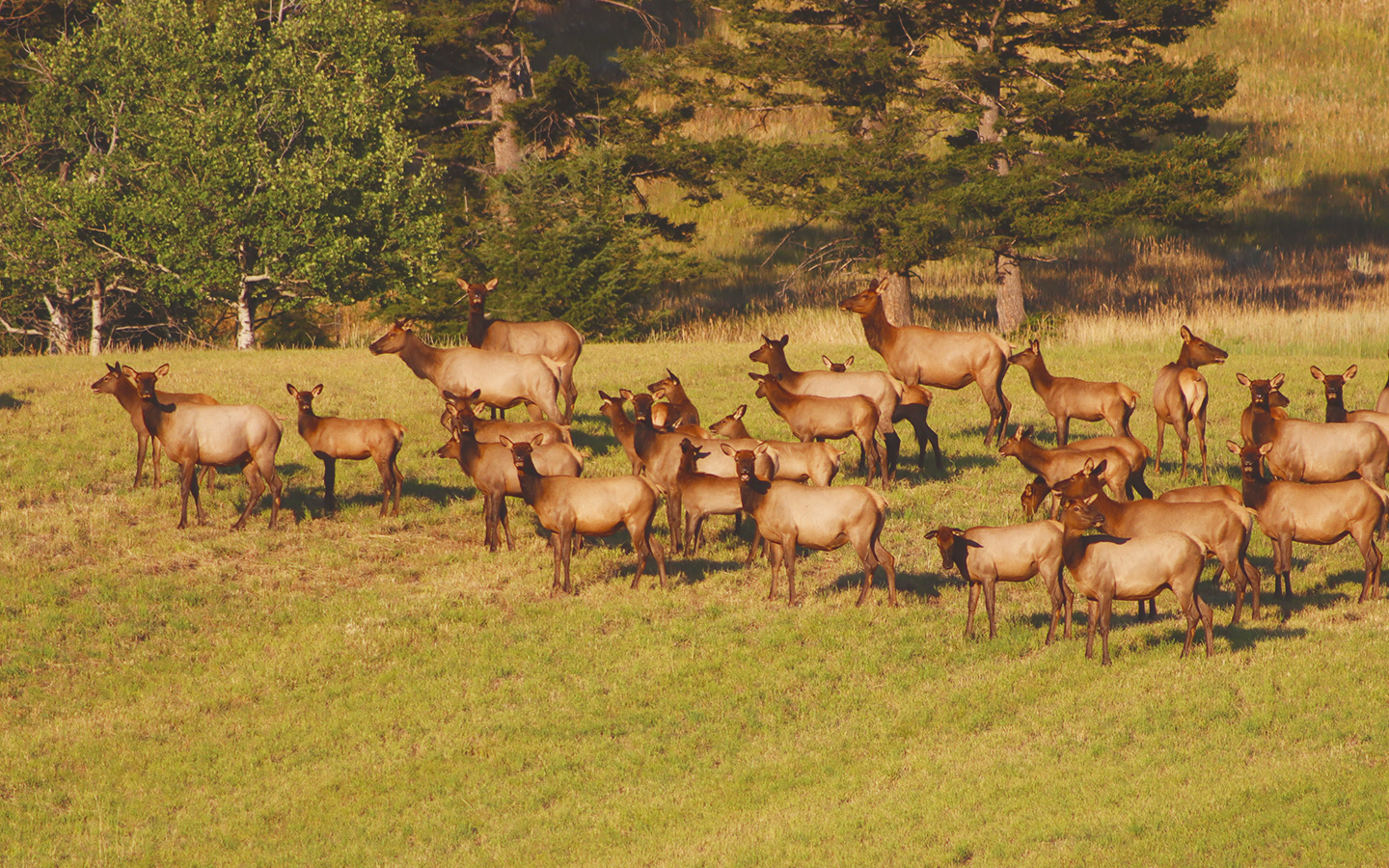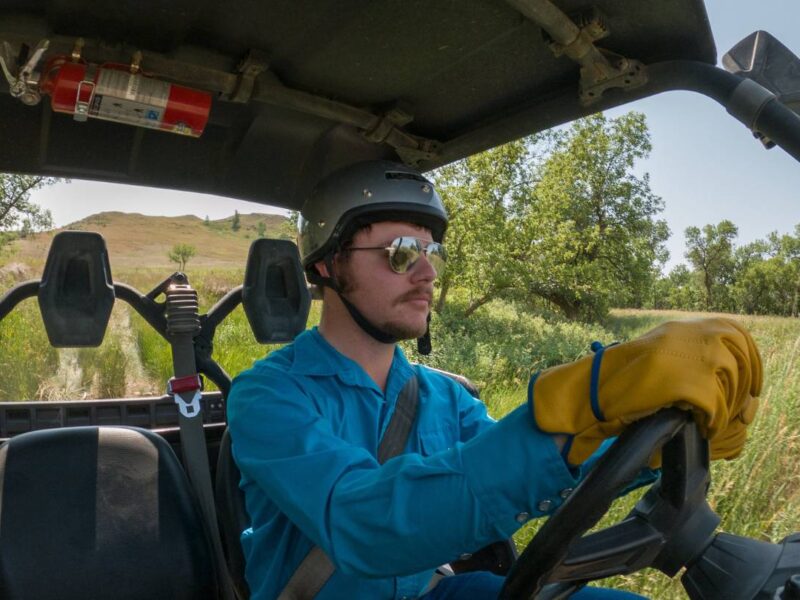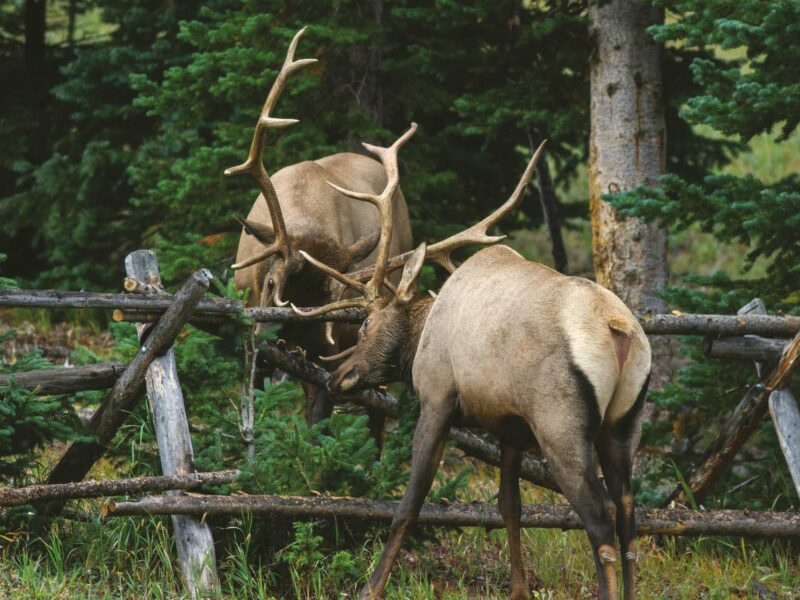
Livestock Grazing and Hunting to Change Elk Behavior
Deseret Land & Livestock (DLL) provides an example of the use of positive and negative pressure, a carrot-and-stick approach, to significantly reduce reliance by elk on managed feeding ground.
In this instance, a privately managed feeding ground in northern Utah was established in 1983 during a deep-snow winter to resolve a major elk depredation issue. Because their normal forage was covered, elk were feeding on hay stacks and livestock feed rows along 30 miles of the Bear River Valley in Utah and Wyoming. To resolve the problem, elk were rounded up, settled on a feed ground on DLL and fed there for some portion of each winter over the next 25 years.
In 2008, things began to change. Building on observations of elk behavior and winter habitat preferences during late-season, guided antlerless elk hunts, DLL, Utah State University (USU) and the Utah Division of Wildlife Resources (UDWR) funded a graduate study to re-wild the herd’s winter diet from fed hay to range feed, using behavioral observations and principles. The impetus for change included the threat of brucellosis transmission from elk to livestock, incompatibility of an elk feeding ground if (or when) wolves arrived and concern that the feeding ground might facilitate the spread of chronic wasting disease (CWD) to cattle if it showed up in the elk herd.
Elk migrate south from the Greater Yellowstone Ecosystem (GYE) to winter adjacent to DLL during severe winters. Dax L. Mangus explains the carrot-and-stick process used to shut down the DLL feeding ground in Reducing Reliance on Supplemental Winter Feeding in Elk (2011):
To affect a change in elk winter feeding behavior, we applied a combination of positive reinforcement for desired behaviors and punishment for undesired behaviors. The positive reinforcement served to reward elk that exhibited desired behaviors while punishment served to decrease undesirable behaviors. Positive reinforcement for being in various locations came in the forms of refuge from hunting pressure and harassment and increased forage availability, while punishment for being in particular locations came in the forms of hunting pressure and harassment.
Positive reinforcements (carrots) included safe zones, where elk were not hunted. These were rangeland pastures that held adequate forage and/or had been improved via strategic livestock grazing or by other range improvement methods. “Elk select rested pastures in rest-rotation grazing systems because they typically have either actively growing forage or dormant forage not used by cattle.”.
Elk were hunted and pressured as needed November–January in order to move them to the safe zones from irrigated meadows and other areas where their presence was not acceptable. Late season antlerless elk hunts had been used in the area for years to manage elk population size.
Hunting is an effective way to reduce/prevent depredation and human-wildlife conflicts. Hunting can also increase the effectiveness of hazing and harassment to prevent damage as animals learn the threat is real. When hunting is used to reinforce hazing, animals tend not to habituate.
Dax L. Mangus, State of Utah Wildlife Program Manager
By designating hunt and safe zones, it was possible to use them to manage winter elk distribution, as well. According to Rick Danvir (DLL wildlife manager at the time), to ensure that the hunts were effective all hunters were required to pass a shooting test, administered by ranch staff, to minimize wounding loss. They were then guided by ranch personnel to improve hunter success and assure hunting occurred only where desired. Ranch records indicate that guiding hunters increased hunter success from under 30 to over 60 percent. Implementing the shooting proficiency test increased hunter success to nearly 90 percent and significantly decreased wounding losses. Most hunters harvested their elk on their first day afield, and hunter days per elk harvested averaged about 1.3. Guides were provided at no charge, which cost the ranch about $100 per hunter.
Mangus continues, explaining the complementarity of hunting and hazing, “Hunting is an effective way to reduce/prevent depredation and human-wildlife conflicts. Hunting can also increase the effectiveness of hazing and harassment to prevent damage as animals learn the threat is real. When hunting is used to reinforce hazing, animals tend not to habituate. Conversely, animals routinely hazed or harassed eventually learn the threat is benign and these methods quickly lose effectiveness.”
Mangus stresses that “while hunting and hazing influence elk behavior, elk depredation is likely to continue if there are no acceptable alternative sources of winter food.” According to Danvir, successfully reducing use of the DLL elk feeding ground required both the carrot and the stick, “providing acceptable alternative sources of winter forage to reinforce desired forage and habitat selection behaviors in addition to the punishment that provided elk the motivation to change behavior.” In the end, the program eliminated use of the feeding ground in all but severe winters and decreased feeding costs in severe winters by half. “The combination of multiple methods, based on principles of behavior, undoubtedly contributed to our success.”
This article originally appeared as a case study in Western Landowners Alliance’s 2018 Reducing Conflict with Grizzly Bears, Wolves and Elk: A Western Landowners’ Guide.




